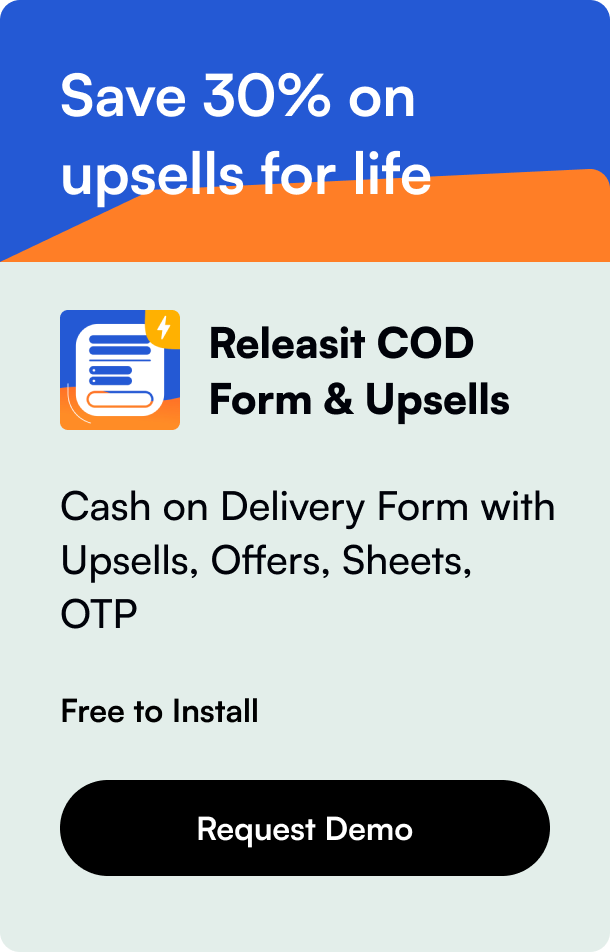Table of Contents
- Introduction
- Understanding Shopify Taxes: The Basics
- Setting Up Your Shopify Store for Tax Compliance
- Shopify and Third-Party Tax Apps
- Conclusion: The Path to Tax Mastery on Shopify
- Charging Sales Tax FAQ
Introduction
Starting an online business on Shopify brings exhilarating moments of success and growth. However, it also introduces the less thrilling, yet crucial aspect of managing taxes. If you're finding the concept of eCommerce taxes bewildering or simply want to ensure you're on the right track, this guide will demystify the process for you. In a world where online sales are booming, understanding how to pay taxes on your Shopify store is not just a necessity—it's a pivotal part of ensuring your business thrives while staying compliant with tax laws.
In this detailed blog post, we aim to help you navigate the complexities of tax management on Shopify. Whether you're a budding entrepreneur or looking to refine your existing knowledge, this article will provide a clear pathway to understanding, setting up, and managing your taxes on Shopify. From determining when you're liable for taxes to configuring your store for efficient tax handling, our comprehensive analysis will equip you with the information you need to confidently manage your tax obligations.
By the end of this guide, you'll have a solid grasp of how Shopify tax settings work, how to determine your tax obligations based on nexus, the difference between physical and economic nexus, and the tools Shopify offers to simplify this potentially daunting task.
Understanding Shopify Taxes: The Basics
Shopify, a leading eCommerce platform, provides various tools to assist merchants with tax calculations; however, it does not file or remit sales taxes on behalf of the business owner. This distinction is crucial as it places the responsibility squarely on the shoulders of the merchant to understand their tax obligations and ensure compliance with federal, state, and local tax laws.
Nexus: The Starting Point of Your Tax Journey
Nexus refers to the connection a business has with a state or locality, obligating it to collect and remit sales taxes on transactions. This connection can be physical, such as having a brick-and-mortar store, warehouse, or employees in a particular location. The Supreme Court ruling in South Dakota v. Wayfair, Inc. expanded the definition of nexus to include economic activities, meaning that online sales to customers in a state can create a tax obligation, regardless of physical presence.
Physical vs. Economic Nexus
- Physical Nexus: Traditionally understood as having a tangible presence in a state.
- Economic Nexus: Arises from surpassing a set threshold of sales or transactions within a state.
Merchants must stay proactive in monitoring their sales activities across state lines to determine where they have established nexus and, consequently, where they are obligated to collect and remit taxes.
Utilizing Shopify for Tax Calculations
Shopify offers features to streamline tax calculations, allowing merchants to set up tax rates automatically based on their nexus. However, it's imperative to keep these rates up-to-date and confirm their accuracy, as tax laws are subject to frequent changes.
Setting Up Your Shopify Store for Tax Compliance
Creating a tax-compliant Shopify store involves a series of steps that ensure you're calculating, collecting, and ready to remit the correct amount of sales tax for each transaction. Here's a simplified approach:
-
Determine Your Nexus: Before setting up your taxes on Shopify, you must identify where you have a tax obligation. Consult with tax authorities or a seasoned tax professional to define your nexus accurately.
-
Register for a Sales Tax Permit: In jurisdictions where you have nexus, it's usually required to register for a sales tax permit before starting to collect taxes from customers.
-
Configure Tax Settings on Shopify: Shopify's intuitive backend allows merchants to input their nexus details and automatically calculate the correct sales tax based on customer location. It's critical to review and adjust these settings to reflect your specific tax obligations.
-
Stay Informed About Tax Rates and Regulations: Tax laws and rates can change. Regularly check for updates or utilize tax management apps that integrate with Shopify for real-time tax rate adjustments.
-
Keep Accurate Records: Maintain detailed records of your sales, taxes collected, and tax payments. These documents are vital for filing tax returns and may be required in the event of an audit.
-
File and Remit Taxes Timely: Use the tax reports generated by Shopify to file your taxes with the respective tax authorities. Be mindful of due dates to avoid penalties and interest for late payments.
Shopify and Third-Party Tax Apps
For merchants seeking additional support, Shopify's App Store offers third-party tax apps like Avalara AvaTax or TaxJar. These apps provide advanced features like automated tax rate determination, tax filing, and the generation of detailed tax reports simplifying the tax management process further.
Conclusion: The Path to Tax Mastery on Shopify
Navigating taxes on Shopify might seem daunting initially, but with the right information and tools, it becomes an integrated part of managing your online business. By understanding your tax obligations, setting up your Shopify store properly, and staying informed about changes in tax regulations, you can ensure tax compliance and focus on growing your business. Remember, consulting with a tax professional can provide personalized advice and peace of mind, allowing you to navigate the complexities of eCommerce taxes with confidence.
Charging Sales Tax FAQ
Q: When do I need to start collecting sales tax on Shopify?
A: You need to start collecting sales tax once you've determined you have nexus in a state or jurisdiction. This requires understanding both physical and economic nexus regulations.
Q: How can I determine if my products are taxable?
A: Taxability can vary by state and product type. Consult state tax authorities or use Shopify's features to categorize your products for accurate tax calculations.
Q: Can Shopify file and remit sales taxes for me?
A: No, Shopify calculates and collects sales taxes but does not file or remit them. You're responsible for reporting and paying your taxes to the appropriate authorities.
Q: What happens if I don't collect sales tax where I have nexus?
A: Failing to collect sales tax where you have an obligation can result in penalties, interest, and audits from tax authorities. It's crucial to maintain compliance to avoid legal and financial repercussions.
Q: How often should I update my tax settings on Shopify?
A: Regularly review your tax settings to ensure they match current tax laws and nexus obligations. Consider quarterly reviews or after significant sales milestones to stay compliant.








